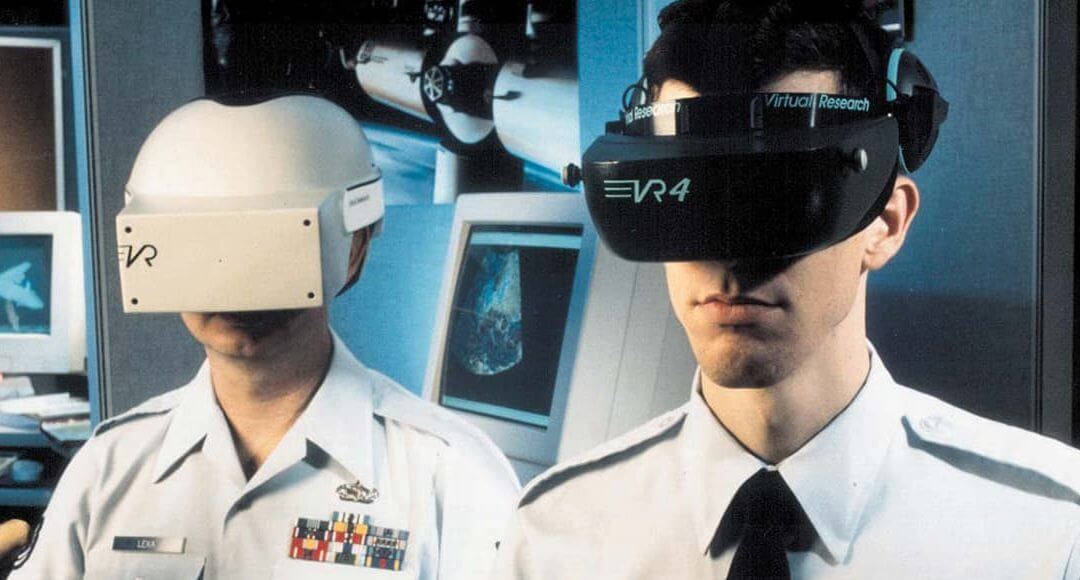Virtual reality is the term used to describe a computer-generated, immersive, and artificial environment. It’s three dimensional, and users are able to suspend disbelief and interact with it as if it was real — that’s the goal, at least.
Some of the simpler examples of virtual reality technology involve 3-D images on a computer screen that can be explored, moving left and right, up and down. Newer, more advanced iterations include sophisticated display screens that wrap around the user’s head, or even actual rooms dedicated to virtual reality use with wearable technology. The question now is, how can this exciting technology be implemented into the world of business?
Virtual reality and small businesses
While virtual reality is most commonly associated with gaming, many small businesses are increasingly looking for ways to incorporate it into the commercial environment. There are examples of its implementation in, for instance, certain estate agencies — where virtual reality tours of apartments, homes, and business buildings available for rent or purchase are offered. This kind of adoption of virtual reality allows estate agents a more convenient and quicker method of organising viewings, as well as reducing staff hours and costs at the same time. A win-win scenario. Using this technology, estate agents’ tours can take place from their office or their clients’ own homes.
An immersive experience…
Virtual reality experiences can also incorporate other senses as well as vision, the most common being audio. With the combination of audio and visual functionality, virtual reality technologies can go even further: they can start to incorporate interactivity with colleagues, customers, and partners.
Further small business uses of virtual reality technology
One exciting area where businesses can use this kind of interactivity is when conducting job interviews. Recruiting can involve potential employees one or more interviews. This can include a fair bit of travel time. Conducting interviews using virtual reality technology is a modern way to go through the recruitment process. Face-to-face discussions can happen while all the attendees are not necessarily in the same physical space. Meetings with many staff members can sometimes be based at different offices, too.
Architecture and design firms can also make use of virtual reality technology. Buildings and gardens they design can be presented as virtual reality models to their clients. This offers a virtual tour and gives the client so much more than sketched or even 3-D models can. It is also a sure fire way to impress the decision maker.
Convenience and other benefits…
How many startup owners go away on two week holidays in the sun? Not many, and virtual reality might just make that happen a little bit more; giving you more freedom and flexibility in how you run your business. Similarly, business travel and conference attendance could also be made smoother and less expensive. If the next conference you would love to attend is held overseas the outlay may make it unfeasible. With virtual reality, you could attend without leaving your office. This makes events accessible to many more people. It reduces the number who are excluded by geography or finances, allowing people and businesses to share more knowledge.
Is business ready for virtual reality?
With a bit of creative thinking, virtual reality technology could really enhance marketing for businesses — big or small. What if an e-commerce store could direct its customers round virtual shopping malls? What if a car showroom could demonstrate how a car drives without needing a test drive? The possibilities are, quite frankly, endlessly brilliant.
Any brand with an eye on business growth can now seriously start to consider how they can expand the marketability of their the products and services through virtual reality technology. Even while options like Google Cardboard are making virtual reality more financially viable, many businesses are still not quite on board. However, as prices come down and user adoption rises, we could start to see some pretty exciting advancements quite soon.
Marketing, user engagement, and recruitment can all be explored in virtual reality formats. Customer service could be improved, too, which could put a consumer face to face with a customer support representative. Reducing communication barriers and improving customer relationships are always on a business’s agenda. Product demonstrations could advance from video to immersive 3-D testing.
The conclusion?
Even if your brand is not ready to incorporate virtual reality technology, it is time to start considering it as a way to further your business goals in the future. Many businesses are becoming less location-focused. Virtual reality could be a way to make this work more effectively than ever before. For more information on what’s happening in the business world, check out our blog for regular articles a new information.

